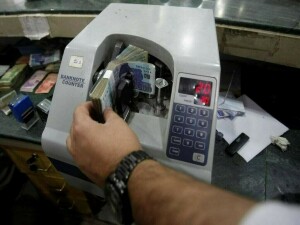Economic Realities and Policy Challenges
Following his participation in the inauguration of the ‘Made in Gujranwala Exhibition’ organized by the Gujranwala Chamber of Commerce and Industry, Finance Minister Muhammad Aurangzeb recognized that the population has not yet experienced the advantages of a very low inflation rate. The Sensitive Price Index for the week concluding on April 10, 2025, showed a week-over-week decline of 0.83 percent and a year-over-year decrease of 2.81 percent, whereas the Consumer Price Index for March showed a low of 0.7 percent.
Data from the Pakistan Bureau of Statistics (PBS) reveals significant decreases in the prices of vital food products this past week, including tomatoes (down 12.82 percent), garlic (down 14.73 percent), and onions (down 11.40 percent), as well as wheat flour and eggs (down 7.40 percent). Additionally, there was a drop in the prices of two significant non-food items: petrol (down 11.89 percent) and diesel (down 8.29 percent).
The majority of food and non-food items saw slight increases (less than one percent for all items except pulse gram at 1.63 percent), with LPG rising by 0.64 percent, long cloth by 0.54 percent, and cigarettes by 0.06 percent.
Sugar, where prices are influenced by elite/politically powerful manufacturers, experienced a substantial week-over-week increase of 16.21 percent, alongside vegetable ghee, which also rose by 16.21 percent. There are worries that inflation rate data may be subject to manipulation for political purposes. The IMF’s October 2024 report indicated that it would assist the “government align inflation expectation survey with best practice….shortcomings remain in the source data available for sectors accounting for around a third of GDP, while there are issues with granularity and reliability of Government Finance Statistics.”
Despite the fall in CPI prices from 4.1 percent in December 2024 to 0.7 percent in March, the Monetary Policy Committee, in its meeting on March 10, 2025, anticipated inflation to “gradually inching up and stabilizing within the target range of 5-7 percent.”
The inflation forecast remains at risk, primarily due to potential instability in food prices, the timing and degree of energy price adjustments, additional revenue measures, protectionist measures in major economies, and unpredictability in global commodity prices. Consequently, there is no reason to be complacent.
Aurangzeb should be acknowledged for admitting that consumers have not benefited from the lower inflation rate. He has promised to provide relief to the salaried class and further reduce power rates.
Economists claim that lowering taxes on the salaried class while still depending significantly on indirect taxes will have a limited impact on the poor. These taxes disproportionately affect the poor more than the rich. Approximately 75 to 80 percent of all direct tax receipts come from withholding taxes imposed in the sales tax mode. Substantial reforms are needed, including widening the tax net and ceasing to tax those who are already taxed.
According to the IMF’s October 2024 report regarding Pakistan’s request for an Extended Fund Facility program, there are three significant issues in key economic sectors: (i) The agricultural sector is unresponsive to consumer preferences because of government price-fixing and procurement operations, which have worsened price stability and hoarding and reduced incentives for innovation; (ii) Resources did not move from comparatively less-to-more productive areas. Low investment, protectionism, and weak competition harmed innovation in production; and (iii) It is essential to continue making the required electricity and gas tariff adjustments. It is urgently necessary to implement reforms to improve distribution and transmission efficiencies and lower generation costs in order to address the energy sector’s issues and restore its viability.
This exhortation is pertinent considering that the government’s expected financial gains from IPP contract renegotiations point to a future outflow, and the recent price reduction is a result of lower fuel costs. The decline in international gasoline prices was not passed on to consumers beginning in the middle of March 2025; instead, electricity rates were cut uniformly.
The authorities are certainly hoping that lower rates would incentivize exporters, a notion that is being challenged not only by the 29 percent US tariffs, but also by the fact that our electricity rates are still almost twice as high as those of regional competitors. The Fund proposes a medium-term transition to cash programs for energy support instead.
The PBS-released data indicates those whose income is between 17,732 rupees per month suffered an inflation of on average over negative 3.26 percent while those with higher incomes were subjected to on average of a little more than negative 2.5 percent.
While the current Fund program provides the authorities little power to execute internal policies, it is logical to conclude that this power can and must be generated by cutting current expenditure rather than increasing it by 21% as in the current year.
This would enable the government to make the politically difficult decision to broaden the tax base gradually rather than merely agreeing to raise the tax revenue target by 2 to 3 trillion rupees, as proposed by the Fund staff.



Comments (0)
No comments yet. Be the first to comment!
Leave a Comment